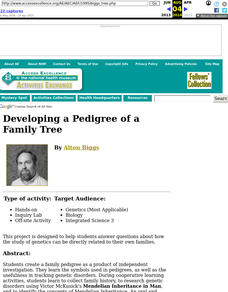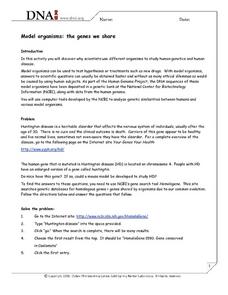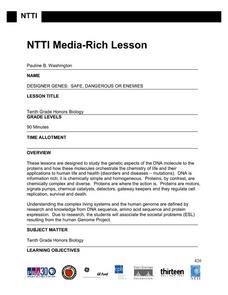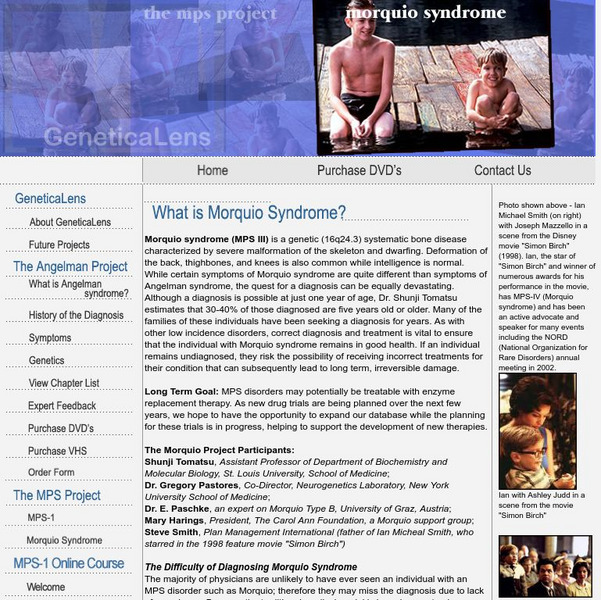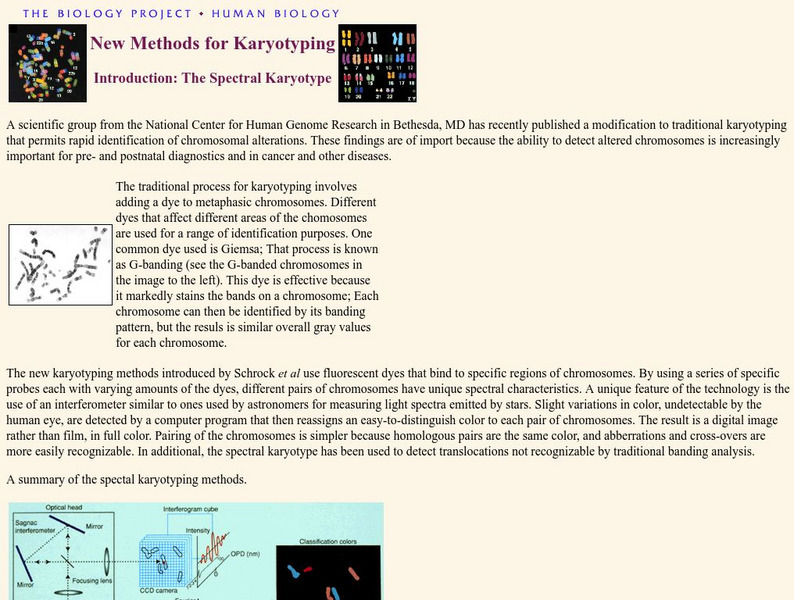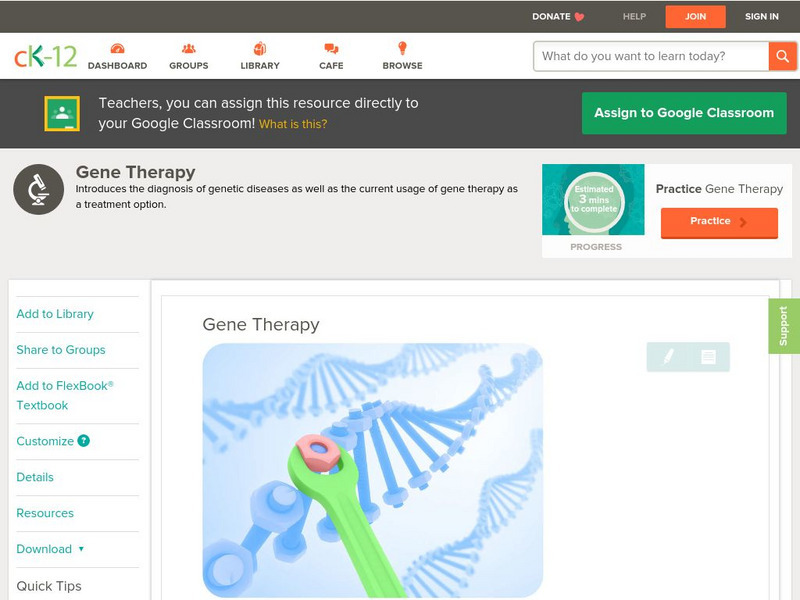Curated OER
Developing a Pedigree of a Family Tree
Students create a family pedigree as a product of independent investigation. They learn the symbols used in pedigrees, as well as the usefulness in tracking genetic disorders. During cooperative learning activities, students learn to...
Curated OER
Genome: The Secret of How Life Works
What do you have in common with a fruit fly? About 60 percent of your DNA. The resource, divided into two units, is intended for grades four to eight and another for high schoolers. Both units include eight lessons covering the...
Curated OER
Model Organisms: The Genes We Share
In this genetics worksheet, students access a website to learn about how human genes mutate to cause heritable disorders such as Huntington disease. Students use the information on this website to complete 12 short answer questions.
Curated OER
Temperature and the Tomato
You will need a photovoltaic system and monitor at your school in order to obtain all of the data required to thoroughly implement this lesson. Your class monitors daily temperature and insolation amounts over a two week span of time....
Curated OER
Cystic Fibrosis
Students examine the disease Cystic fibrosis, the causes, and the effects it has on the respiratory system. Students use the Biology Workbench and tools on the National Center for Biotechnology Information website to study the protein...
Curated OER
STS Biology - Teaching Controversial Topics
Each of the three activities submitted presents difficult science topics in the context of the human experience. The activities focus on real-world problems, which have science components, from the learners' perspectives.
Curated OER
Background of Diseases-- Germs or Genes?
Students explore the background of common diseases. For this personal health lesson, students research causative agents of communicable and non-communicable diseases. Students use their research findings to create data tables in...
Curated OER
Heredity Mix 'n Match
Students randomly select jelly beans that represent genes for several human traits such as tongue-rolling ability and eye color. Then, working in pairs (preferably of mixed gender), students randomly choose new pairs of jelly beans from...
Curated OER
Zebrafish as a Model for Muscle Development
Students explore the steps of protein synthesis in zebrafish. They view video clips to identify the parts of a zebrafish and observe them as they sequence the developmental stages. In groups they identify the muscles and how proteins are...
PBS
Pbs Learning Media: How to Conquer a Genetic Disease
In Blazing a Genetic Trail, by the Howard Hughes Medical Institute, follow this three-step approach to treating genetic diseases.
University of Arizona
Biology Project: Karyotyping Activity
Try your hand at matching chromosomes to complete the karyotype in this simulation. Simulation contains karyotyping activity for three different patients and students can explore whether those patients have any genetic disorders.
University of Arizona
Biology Project: Karyotyping Activity
If you want an interactive way to practice karyotyping, this is it. There are three patient histories and karyotypes to use in diagnosing human genetic disorders. There is enough information on comparing chromosomes to get you started.
Other
Genetica Lens: Morquio Syndrome
Part of a project designed to provide visual documentation of individuals with rare genetic disorders, in order to help with the diagnosis and treatment of these disorders. This page describes Morquio Syndrome and discusses the problems...
PBS
Pbs Learning Media: Religion and Ethics Weekly: Dr. Francis S. Collins Interview
Read a discussion with Francis S. Collins, director of the Human Genome Project, who touches on the role that faith plays in his profession. Collins discusses the Human Genome Project and its goals and results, genetic disorders, and the...
National Institutes of Health
Nih News Release: Marfan Syndrome Research
Article describes characteristics of Marfan Syndrome and reviews research project involving mice with mutant fibrillin gene.
University of Arizona
The Biology Project: Human Biology: New Methods for Karyotyping
Read about the findings from the scientific group from the National Center for Human Genome Research, which published a modification to traditional karyotyping that permits rapid identification of chromosomal alterations.
The Association of the British Pharmaceutical Industry
Abpi: Biotechnology
Students read through a complete, interactive lesson on biotechnology. An activity at the end allows students to research and present arguments for or against statements about the ethics of gene therapy and gene manipulation.
CK-12 Foundation
Ck 12: Life Science: Gene Therapy
[Free Registration/Login may be required to access all resource tools.] Gene therapy is the insertion of genes into a person's cells to cure a genetic disorder. Could gene therapy be the cure for AIDS? No, AIDS is caused by a virus. Gene...
National Human Genome Research Institute
National Human Genome Research Institute
This is the home page of the head agency overseeing the Human Genome Project.
Cold Spring Harbor Laboratory
Dna Interactive: Teacher Guide
Teacher resource page provides links to additional teacher materials, the six units, student worksheets and templates that can be used as teachers and students work through the DNA Interactive site.


